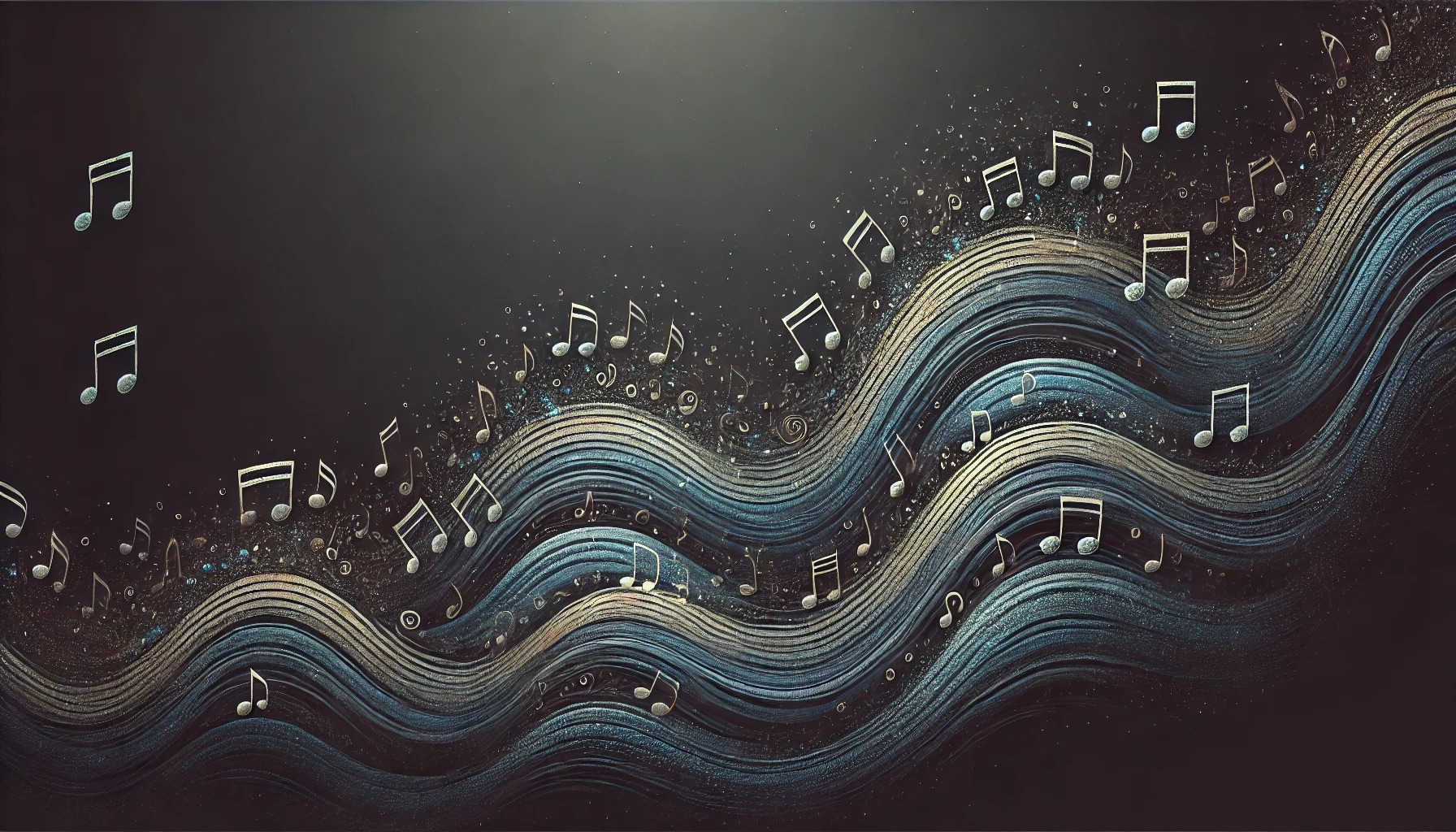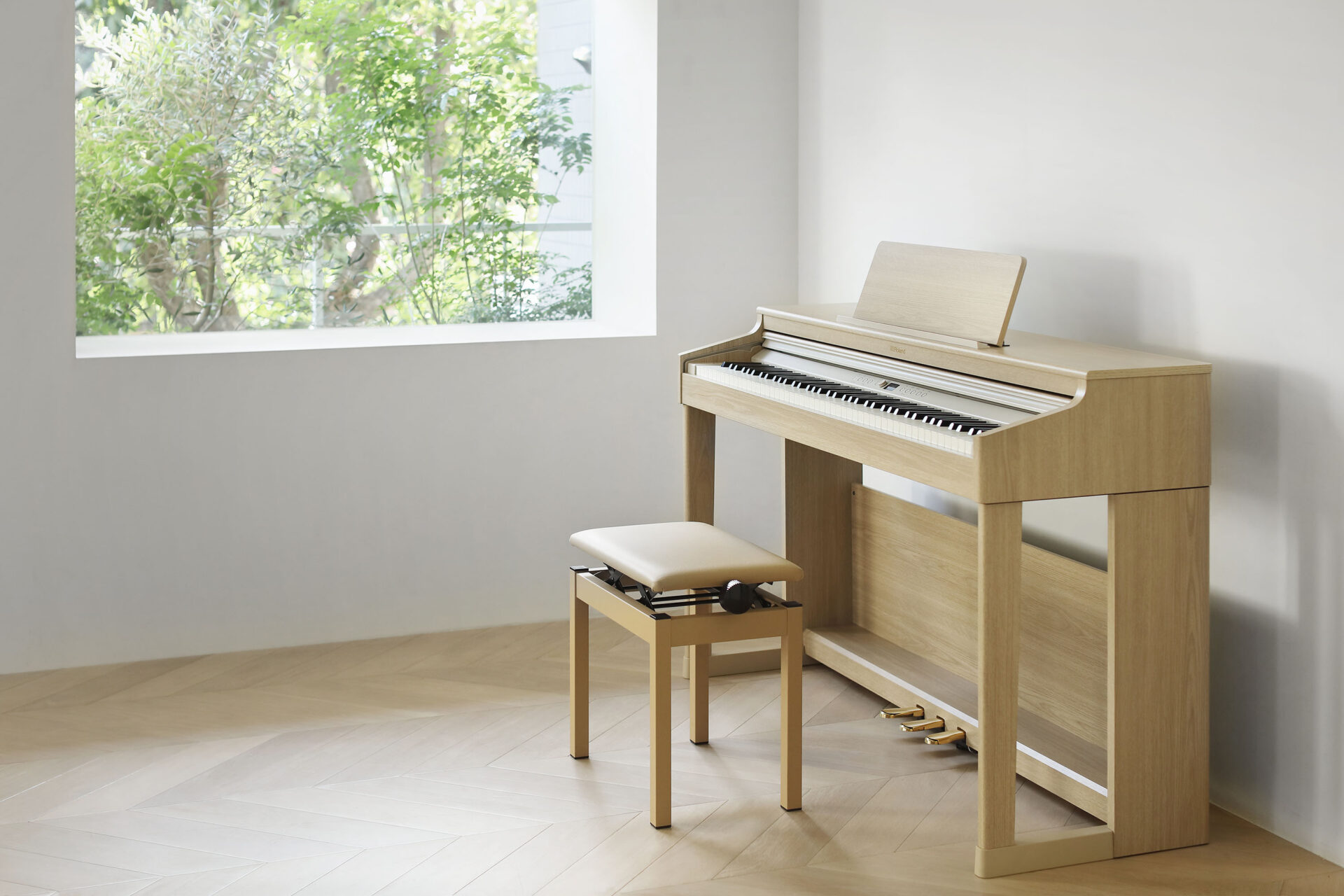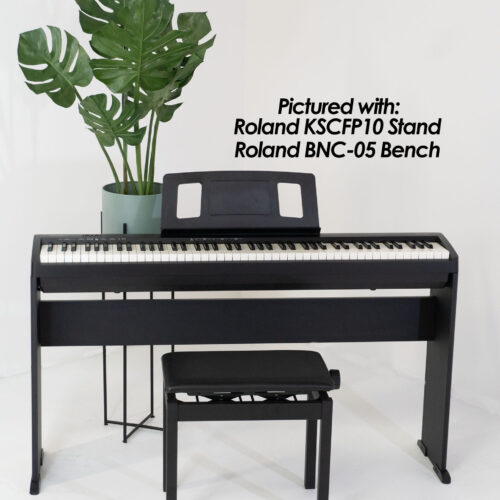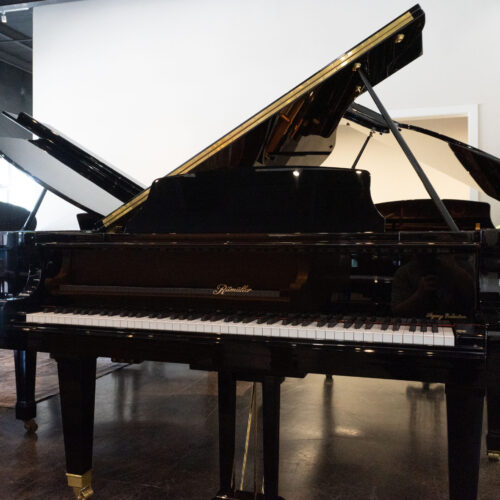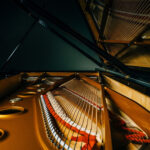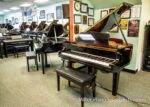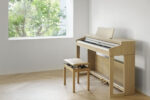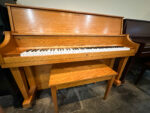By: Rubio, Resident Artist / Product Specialist
I was raised on pianos of all sorts, playing everything from toy pianos to Bösendorfer Imperial concert grand pianos as a child. I watched digital pianos start to come into being back in the 1980’s. Honestly, most of those early offerings were pretty horrible!
At the time of this writing in late 2025, things have come an extremely long way as far as digital pianos are concerned. In fact, there are a lot of myths that we need to bust about the current state of digital pianos. Here are some of the biggest ones, in no particular order:
Myth #1: Digital pianos sound “inferior” to acoustic pianos always
In our showroom, we have a beautiful hand-built German Seiler 9-foot concert grand, one of the nicest pianos I’ve ever had the pleasure of playing. There isn’t anything in the digital world that comes close to it. However, candidly, there really isn’t very much in the acoustic world that can either. You’d expect as much though since it has a $340,000 MSRP price tag!
Quality digital pianos with weighted keys generally range in price from $500 to $18,000 USD. When you compare them to acoustic pianos in their price range, they stack up a lot more favorably.
In our showroom, you’ll see digital pianos placed near similarly priced used pianos. They are great alternatives to those used pianos and have actions that respond more like a grand (gravity based rather than spring loaded). These instruments have quality onboard speakers but often sound even better through a nice set of headphones. Digital pianos can be put through external speakers as well. This often puts their sound in a completely different league.
On that note, digital pianos are always limited by the speakers you are hearing the sound through. An acoustic piano, once it’s been recorded or mic’d up and put through a sound system, has many of the same sonic challenges.
Which brings us to our next common myth:
Myth #2: Acoustic pianos can do things that digital pianos can’t
Once upon a time, this was definitely true, even of the best digital pianos. Nowadays, however, they have closed the gap in pretty much every area. Most modern digital pianos are capable of, but not limited to, the following:
- Sympathetic resonance, the natural tones created by other notes when a key is held down.
- Resonant interactions between different keys, just like any acoustic piano
- Duplex or aliquots resonance, found on high-end grand pianos
- Different levels of half-pedaling, up to 127 of them in some cases.
Quality modern digital piano actions are also always not only weighted, but graded in the same way an acoustic piano is. This means the action is heavier in the bass (left side of the keyboard), and lighter in the treble (right side).
Myth #3: Practicing on a digital will “ruin” you for acoustic pianos
This should be clear as day to everyone reading this, but we know the myth is still out there, so it’s worth talking about.
Besides the fact that digital pianos have much better actions than they used to, it’s important to understand that acoustic pianos’ actions vary a ton from one piano to the next.
Let’s look at a performance concert grands as an example. I may have 10 stages with 10 Steinway Model D pianos on them (the number one concert piano in the world). I NEVER know what that action is going to feel like. Not only have their actions changed dramatically over the years, but I never know the state of it before I am in front of it to play it.
Piano actions tend to be too stiff on a new piano (most piano players will tell you this) and, at the other end of the spectrum, on an older and poorly maintained piano, they may be loose and sloppy and in dire need of redoing. When someone restores a piano, that action could be completely different from the one that originally rolled out of the factory.
The truth is that piano players have to be prepared to play a wide range of piano actions if they’re going to play multiple instruments, whether they be digital or acoustic.
But surely the least expensive digital pianos don’t have good actions, right? You may be surprised if that’s what you think. In fact, the last myth we will look at is that:
Myth #4: There are no good inexpensive digital pianos
Once again, even six or seven years ago, this was still somewhat true. Back then, buy a digital piano in the $500-600 USD range, or less, and you were going to have to make deep sacrifices. The sound would be “off” and the action would be really subpar.
To be honest, though, things already had started to change when Casio released the first Privia instruments back in 2003. I bought one for a church I was playing for at the time, and it was already quite a lot of “bang for the buck.”
In today’s market, with offerings like the Roland FP-10, you can get even more value per dollar spent. This digital piano has the same PHA-4 action and piano sounds as are found in much more expensive instruments.
For many people, the perfect digital piano experience may be simply plugging in a good pair of headphones and immersing yourself.
Wrapping Up
The truth is, digital pianos have come an incredibly long way. They have moved from being a compromise to becoming an amazing option for players of every level, from beginners practicing quietly at home to professionals recording or performing.
Come to think of it, as I review this post, it occurred to me we recently had a very well-known international musician and composer make a special request to have a Roland FP-90X (specifically) for his dressing room before a major performance at Belmont University’s Fisher Center for the Performing Arts. If that kind of request doesn’t show just how far digital pianos have come and how much confidence top artists have in them, I don’t know what will!
In the end, what matters most is that you keep playing and growing as a musician, whether you prefer the feel of an acoustic or the flexibility of a digital.
If you would like to really see, hear and feel how far digital pianos have come, stop by Miller Piano Specialists in Nashville. We will help you find the perfect piano that fits your playing style, home, and goals.
